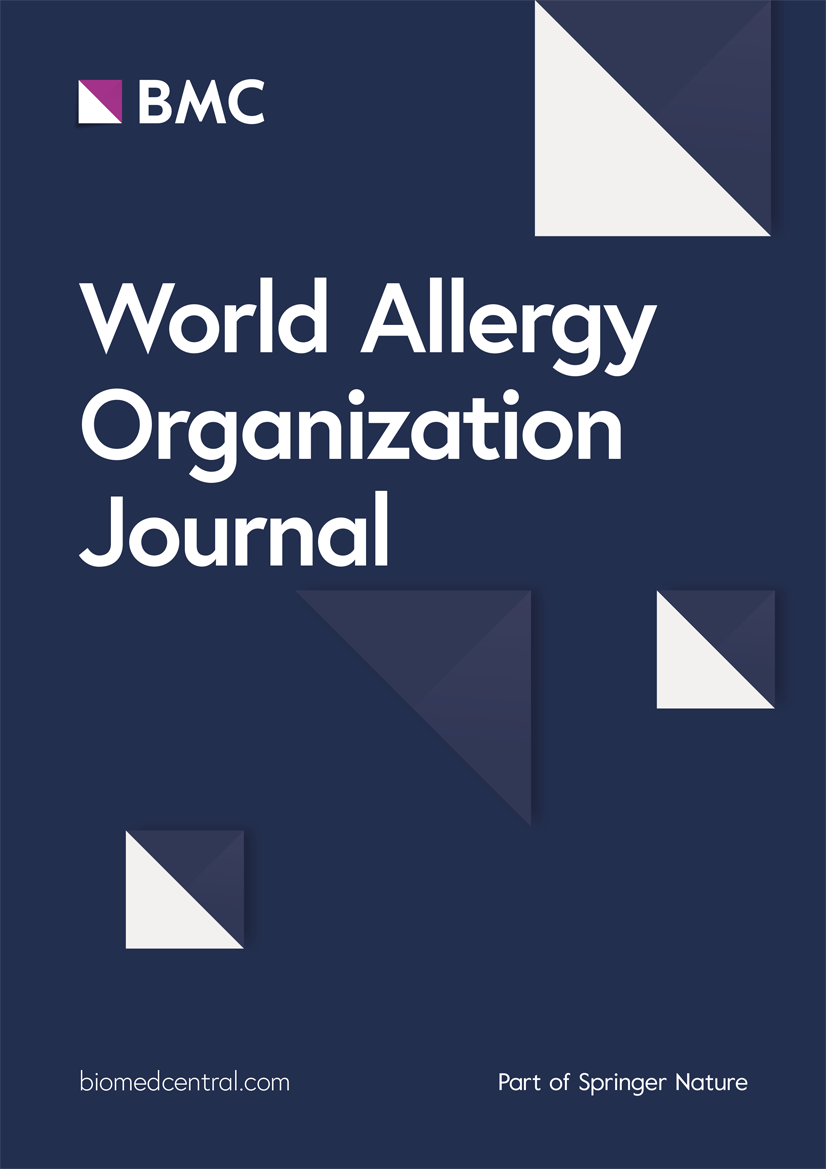Latin American guidelines for the diagnosis and treatment of Stevens-Johnson syndrome and toxic epidermal necrolysis
IF 4.3
2区 医学
Q2 ALLERGY
引用次数: 0
Abstract
Background
Stevens-Johnson syndrome (SJS) and toxic epidermal necrolysis (TEN) are severe cutaneous reactions induced by delayed drug hypersensitivity, characterized by their complexity and multisystemic nature. Their diagnosis and management are challenging and require a multidisciplinary approach. Identifying the culprit drug is crucial to ensure that the patient has access to safe therapeutic options in the future. To date, there are no specific Latin American guideline or consensus documents on SJS/TEN.
Objective
To develop a Latin American guideline on the clinical diagnosis, management, and treatment of SJS/TEN, based on available scientific evidence and the experience of experts from various medical specialties.
Methods
This guideline was developed by a group of Latin American allergists and dermatologists involved in the management of SJS/TEN. A search of scientific publications was conducted, and the expert group evaluated the available evidence in the literature, providing grades of recommendation. In cases where there was insufficient evidence, consensus was reached among the experts.
Results
The Latin American guidelines on SJS/TEN were developed, addressing relevant practical aspects of clinical diagnosis, and the identification of culprit drugs using the ALDEN (Algorithm of Drug Causality for Epidermal Necrolysis). It also offers recommendations on management, treatment, and prevention of complications, along with a specific algorithm for disease management. This guideline includes a therapeutic strategy, developed and agreed upon by expert specialists involved in the treatment of SJS/TEN.
史蒂文斯-约翰逊综合征和中毒性表皮坏死松解症的拉丁美洲诊断和治疗指南
史蒂文斯-约翰逊综合征(SJS)和中毒性表皮坏死松解症(TEN)是由迟发性药物超敏反应引起的严重皮肤反应,具有复杂性和多系统的特点。他们的诊断和管理是具有挑战性的,需要多学科的方法。确定罪魁祸首药物对于确保患者在未来获得安全的治疗选择至关重要。迄今为止,没有关于SJS/TEN的具体拉丁美洲指南或共识文件。目的根据现有的科学证据和各医学专业专家的经验,制定拉丁美洲SJS/TEN的临床诊断、管理和治疗指南。方法本指南由一组参与SJS/TEN管理的拉丁美洲过敏症专家和皮肤科医生制定。对科学出版物进行了检索,专家组评估了文献中的现有证据,并提供了推荐等级。在证据不足的情况下,专家之间达成共识。结果制定了SJS/TEN拉丁美洲指南,解决了临床诊断的相关实际问题,并使用ALDEN(表皮坏死松解药物因果关系算法)识别罪魁祸首药物。它还提供管理、治疗和预防并发症的建议,以及疾病管理的特定算法。本指南包括由参与SJS/TEN治疗的专家制定和商定的治疗策略。
本文章由计算机程序翻译,如有差异,请以英文原文为准。
求助全文
约1分钟内获得全文
求助全文
来源期刊

World Allergy Organization Journal
Immunology and Microbiology-Immunology
CiteScore
9.10
自引率
5.90%
发文量
91
审稿时长
9 weeks
期刊介绍:
The official pubication of the World Allergy Organization, the World Allergy Organization Journal (WAOjournal) publishes original mechanistic, translational, and clinical research on the topics of allergy, asthma, anaphylaxis, and clincial immunology, as well as reviews, guidelines, and position papers that contribute to the improvement of patient care. WAOjournal publishes research on the growth of allergy prevalence within the scope of single countries, country comparisons, and practical global issues and regulations, or threats to the allergy specialty. The Journal invites the submissions of all authors interested in publishing on current global problems in allergy, asthma, anaphylaxis, and immunology. Of particular interest are the immunological consequences of climate change and the subsequent systematic transformations in food habits and their consequences for the allergy/immunology discipline.
 求助内容:
求助内容: 应助结果提醒方式:
应助结果提醒方式:


